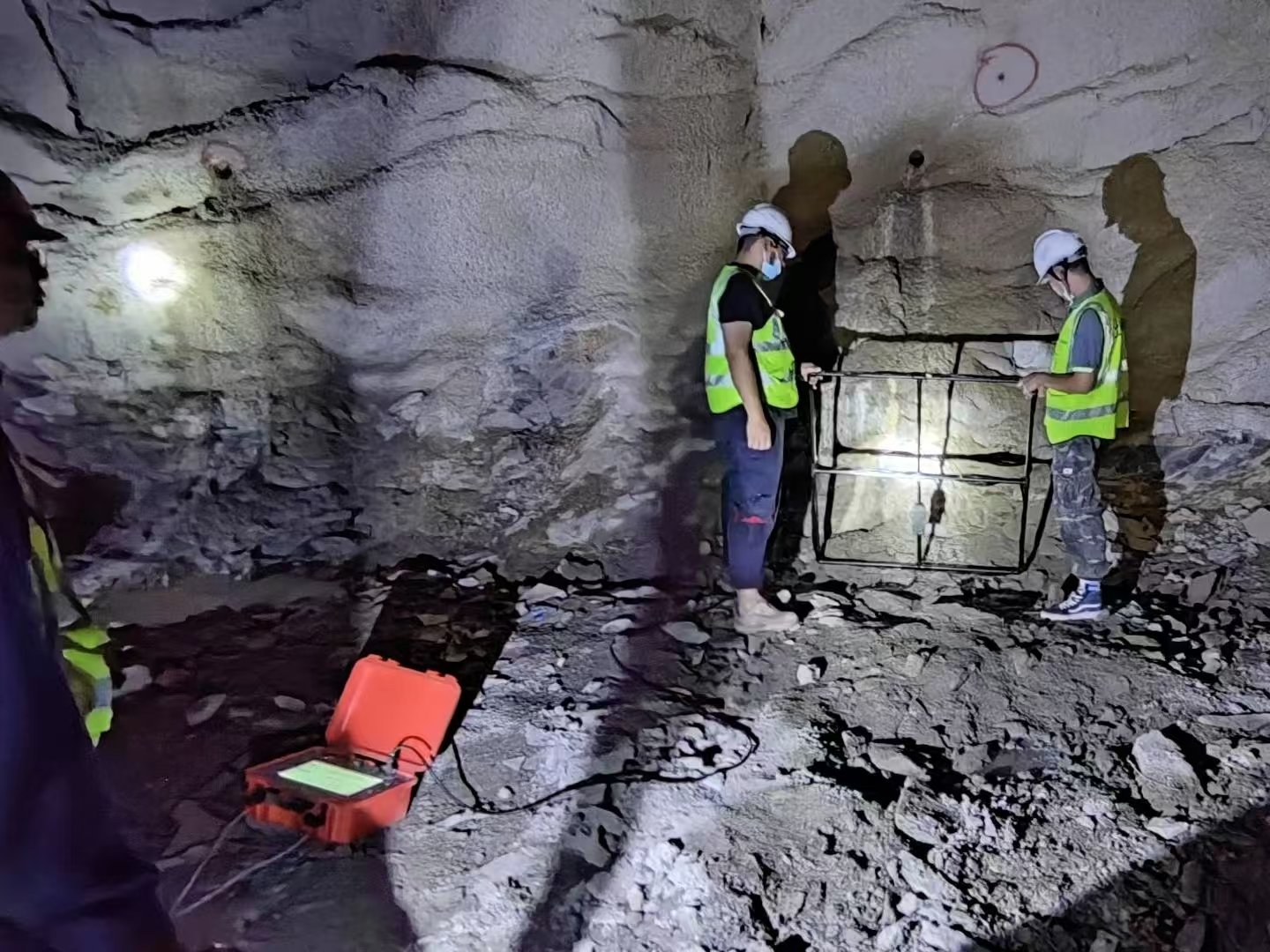Case Background: In July 2018, transient electromagnetic (TEM) was used to detect water-rich areas within a 120-meter radius around the roof and bedding in front of the moraine head in a phosphate mine. This was followed by analysis of possible fault structures and other geological conditions.
Exploration Interpretation: 3D imaging shows low-resistivity areas, shown as the light blue area in the figure, extending from the roof to the bedding plane, and 0-15 degrees to the left, approximately 10-30 meters and 50-100 meters from the tunnel face. This anomaly is distributed from top to bottom, exhibiting a certain degree of coherence and connectivity, and exhibits significant water-rich properties. Based on the actual geological conditions, it is inferred that this anomaly may have a distinct top-to-bottom fault.
Subsequent verification: The mining company conducted drilling in this location based on this prediction. Water was found in close proximity to the three drill holes and was subsequently pumped out. The prediction was effective.
Data display:

Qitou 2D transverse detection profile

3D comprehensive schematic diagram of exploration results


